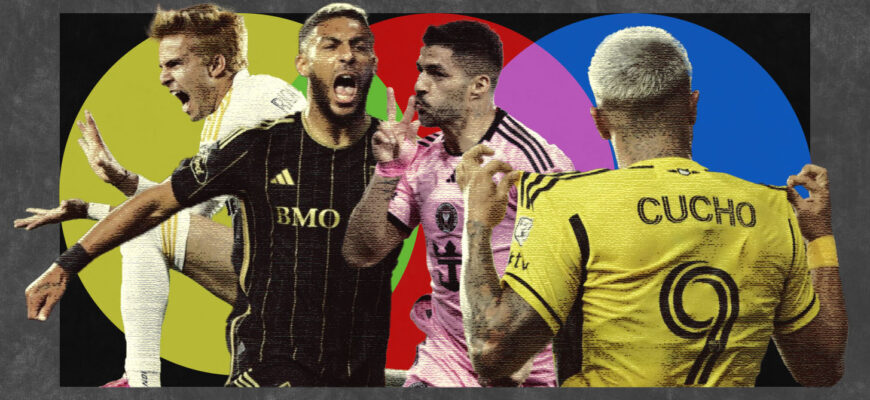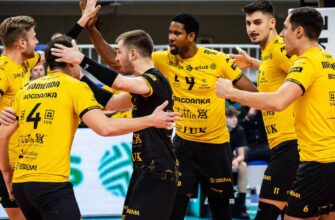In the relentlessly evolving landscape of global sports, ambition often collides with the stark realities of market dynamics and the undeniable quality of the “product” on offer. For Major League Soccer (MLS), a league that has seen commendable growth over nearly three decades, the current moment presents a pivotal juncture. According to Columbus Crew owner Jimmy Haslam, a seasoned sports executive with deep ties to the NFL, MLS faces a significant challenge in its quest to be recognized among the world`s truly top-tier football leagues.
The Uncomfortable Truth: Product Quality, Viewership, and Economic Value
Haslam`s recent remarks at a conference in London pulled back the curtain on an inconvenient truth for MLS: despite infrastructural advancements, increasing popularity, and a growing fanbase, the league`s on-field product and domestic viewership still fall short of its grand aspirations. He candidly acknowledged that while progress has been made, the league remains a considerable distance from its ambition of cracking the top five or six global football entities.
“We still have a long way to go in getting people to watch our product on TV, which is where true value is created,” Haslam stated, pinpointing a critical area for improvement.
This sentiment is starkly underscored by a rather compelling financial comparison. Haslam highlighted the cavernous chasm between media rights deals in American sports, noting that the behemoth NFL commands a staggering $420 million annually from its TV contract, whereas MLS secures a comparatively modest $4 million. This colossal disparity is not merely an interesting statistic; it is a tangible reflection of perceived market value, viewer engagement, and ultimately, the commercial potency of the league. When a league struggles to capture a significant domestic television audience, even amidst a burgeoning football culture, it indicates a fundamental disconnect in the “product” being offered versus what the market demands.
The magnetic allure of established European leagues, particularly England`s Premier League, remains a dominant force in the U.S. market. Saturday morning broadcasts from across the Atlantic routinely draw considerable attention, serving as a constant, high-definition benchmark for what American audiences expect from top-tier football. It`s a benchmark MLS, by Haslam`s admission, is yet to consistently meet across the board.
The Elephant in the Room: Promotion and Relegation – A Necessary Jeopardy?
Perhaps one of the most contentious and widely debated topics within American soccer circles revolves around the implementation of promotion and relegation. The closed-system model, characteristic of major American sports leagues like the NFL, NBA, and NHL, offers stability and ensures financial predictability for team owners. However, it also inherently removes the existential jeopardy and thrilling narratives that define football leagues globally.
Haslam, while carefully navigating the complexities and acknowledging uncertainty regarding its immediate feasibility for MLS, nonetheless acknowledged the necessity of considering radical structural changes. “Do we ever get to that MLS? I’m not sure,” he mused. “We’re going to have to change some things up… And if we want to go to – I’ll make up a number, to five or six – we’re going to have to do something different. Could that be a possibility? It could.”
The implied question hangs heavy in the air: can a league truly ascend to global elite status without adopting the universally recognized competitive structure that fuels much of the sport`s drama and financial engine? For many purists, and even pragmatic strategists, the answer is a resounding `no.` The introduction of promotion and relegation would undeniably inject a new layer of intrigue and intensity, potentially boosting viewership and interest week in, week out, not just for the top teams battling for a title, but for every club battling for survival or striving for promotion.
A New Challenger Emerges: The USL Factor
Adding another intriguing layer to MLS`s strategic quandary is the ambitious rise of the United Soccer League (USL). For the first time in recent memory, MLS faces a legitimate, well-funded domestic competitor actively challenging its status quo. The USL has boldly announced its intention to attain Division I status by 2027, with a firm commitment to implementing promotion and relegation a year later. This vision is not merely aspirational; it is backed by a significant financial commitment from BellTower Partners, a private investment firm, signaling serious intent.
USL CEO Alec Papadakis emphasized the strategic significance of this investment, highlighting it as an “inflection point” for their growth. Their stated goal is to align American soccer “more closely with the global game” through top-tier Division One play and the integration of promotion and relegation. This move by USL is more than just a competitive threat; it`s a direct challenge to the very philosophy underpinning MLS`s existence as a closed system, offering a potentially parallel, globally-aligned pathway for American football development.
The Path Forward: A Call for Bold Evolution
Jimmy Haslam`s observations underscore a critical juncture for Major League Soccer. The league`s journey from a nascent startup to a respectable entity has been commendable, marked by impressive stadium development, rising attendance, and the attraction of global stars. However, the next leap – the leap into the truly elite echelons of global football – requires more than incremental improvements. It demands a strategic overhaul, a willingness to challenge foundational orthodoxies, and a profound commitment to elevating the core product.
Whether through a dramatic restructuring like promotion and relegation, a significant reinvestment in player development and coaching, a sophisticated recalibration of its media strategy, or a combination of these elements, MLS must innovate. The ambition to be a top-five global league is admirable, but as Haslam rightly points out, simply wanting it won`t make it so. The competition, both domestic and international, is sharpening, and audience expectations are rising. For MLS, the time for “something different” is not a distant possibility; it`s an immediate imperative if it truly intends to command the global respect and viewership it seeks.








